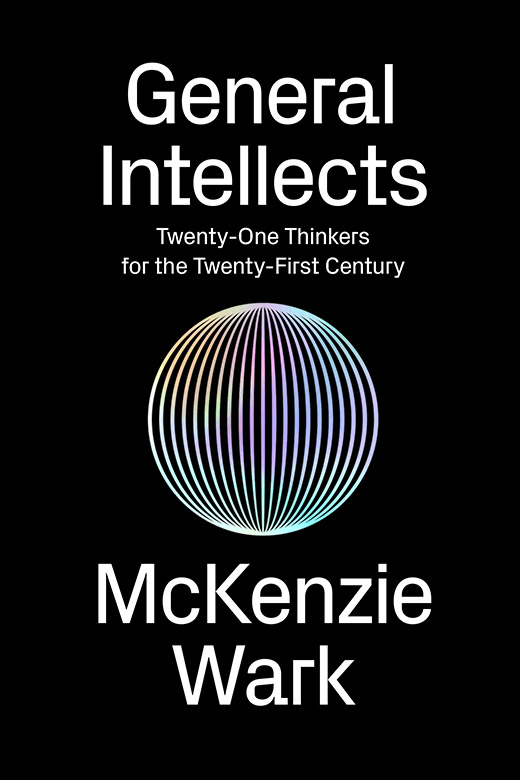RoseLee Goldberg: Laurie Anderson (2000)
Filed under book | Tags: · art, art criticism, avant-garde, music, music criticism, musical instruments, performance, performance art, storytelling, technology

“Laurie Anderson is one of the most acclaimed and innovative performance artists and musicians working today. The entire scope of her career is celebrated in this volume, from her early art works and performances in the 1970s, to her rise to prominence in the 1980s with her single O Superman, her portrait of the United States, and her breakthrough album Strange Angels; to her interactive Web site called The Green Room, a CD-ROM titled Puppet Motel, and her production Songs and Stories from Moby Dick, an electronic opera that is based on Herman Melville’s epic novel and includes new inventions, such as the Talking Stick.
With insightful text and more than 300 illustrations, author RoseLee Goldberg, a leading authority on performance art, explores aspects of Anderson’s work of the past three decades, illuminating Anderson’s creative process; her enduring interests in storytelling and in technology; her collaborations with such avant-garde figures as author William Burroughs, monologist Spalding Gray, and rock star Lou Reed; the social and political contexts that have shaped her art; and the critical and popular response it has received. In addition to surveying Anderson’s work chronologically, Goldberg devotes special sections of the book to Anderson’s inventions and body instruments, such as her Headlight Glasses and Screen Dress; her stage sets; her many violins, including the Tape Bow Violin and the Viophonograph; her scores; and her videos. The lyrics to many of Anderson’s songs are included, as are lengthy excerpts from many of her performances, stories, and other writings.”
Publisher Harry N. Abrams, New York, 2000
ISBN 0810935821
204 pages
Review: Eric P. Nash (NYT Books, 2000).
PDF (46 MB, no OCR)
Comment (0)McKenzie Wark: General Intellects: Twenty-One Thinkers for the Twenty First Century (2017)
Filed under book | Tags: · anthropocene, capitalism, communism, culture, labour, marxism, neoliberalism, philosophy, politics, technology, theory, work

“A guide to the thinkers and ideas that will shape the future
What happened to the public intellectuals that used to challenge and inform us? Who is the Sartre or De Beauvoir of the internet age? General Intellects argues we no longer have such singular figures, but there are, instead, general intellects whose writing could, if read collectively, explain our times. Covering topics such as culture, politics, work, technology, and the Anthropocene, each chapter is a concise account of an individual thinker, providing useful context and connections to the work of the others. McKenzie Wark’s distinctive readings are appreciations, but are nonetheless critical of how neoliberal universities militate against cooperative intellectual work that endeavors to understand and also change the world.”
The thinkers included are Amy Wendling, Kojin Karatani, Paolo Virno, Yann Moulier Boutang, Maurizio Lazzarato, Franco “Bifo” Berardi, Angela McRobbie, Paul Gilroy, Slavoj Žižek, Jodi Dean, Chantal Mouffe, Wendy Brown, Judith Butler, Hiroki Azuma, Paul B. Préciado, Wendy Chun, Alexander Galloway, Timothy Morton, Quentin Meillassoux, Isabelle Stengers, and Donna Haraway.
Publisher Verso, London, 2017
Public Seminar series
ISBN 9781786631909, 1786631903
viii+325 pages
HTML
See also extra chapters on Eduardo Viveiros de Castro, Nick Land, Sianne Ngai, Wang Hui, Amitav Ghosh, Yves Citton and Bruno Latour.
Writing and Unwriting (Media) Art History: Erkki Kurenniemi in 2048 (2015)
Filed under book | Tags: · archive, art, media art, memory, music, technology

“Over the past forty years, Finnish artist and technology pioneer Erkki Kurenniemi (1941-2017) was a composer of electronic music, experimental filmmaker, computer animator, roboticist, inventor, and futurologist. Kurenniemi was a hybrid—a scientist-humanist-artist. Relatively unknown outside Nordic countries until his 2012 Documenta 13 exhibition, ”In 2048,” Kurenniemi may at last be achieving international recognition. This book offers an excavation, a critical mapping, and an elaboration of Kurenniemi’s multiplicities.
The contributors describe Kurenniemi’s enthusiastic, and rather obsessive, recording of everyday life and how this archiving was part of his process; his exploratory artistic practice, with productive failure an inherent part of his method; his relationship to scientific and technological developments in media culture; and his work in electronic and digital music, including his development of automated composition systems and his “video-organ,” DIMI-O. A “Visual Archive,” a section of interviews with the artist, and a selection of his original writings (translated and published for the first time) further document Kurenniemi’s achievements. But the book is not just about one artist in his time; it is about emerging media arts, interfaces, and archival fever in creative practices, read through the lens of Kurenniemi.”
Edited by Joasia Krysa and Jussi Parikka
Foreword by Erkki Huhtamo
Publisher MIT Press, 2015
ISBN 9780262029582, 0262029588
xxviii+340 pages
Reviews: Amanda Egbe (Leonardo, 2016), Alessandro Ludovico (Neural, 2016).
PDF (5 MB)
Comment (0)
